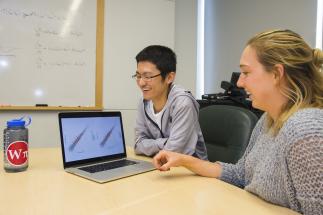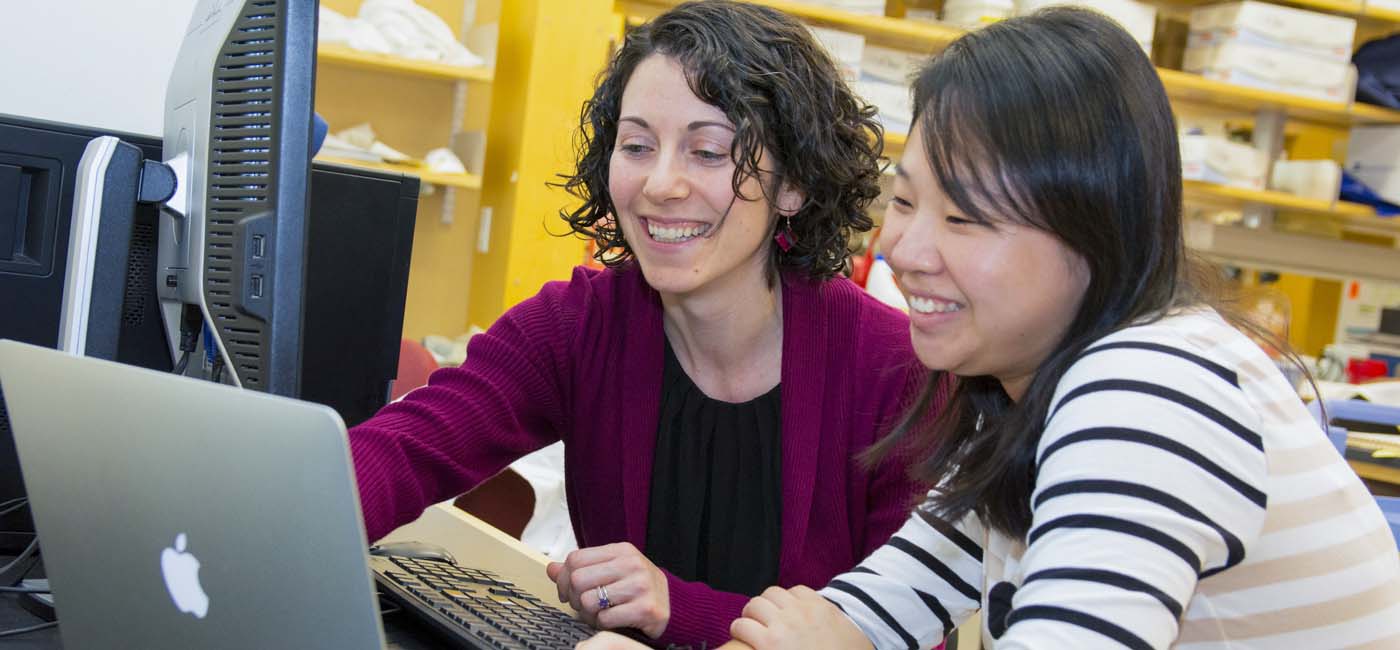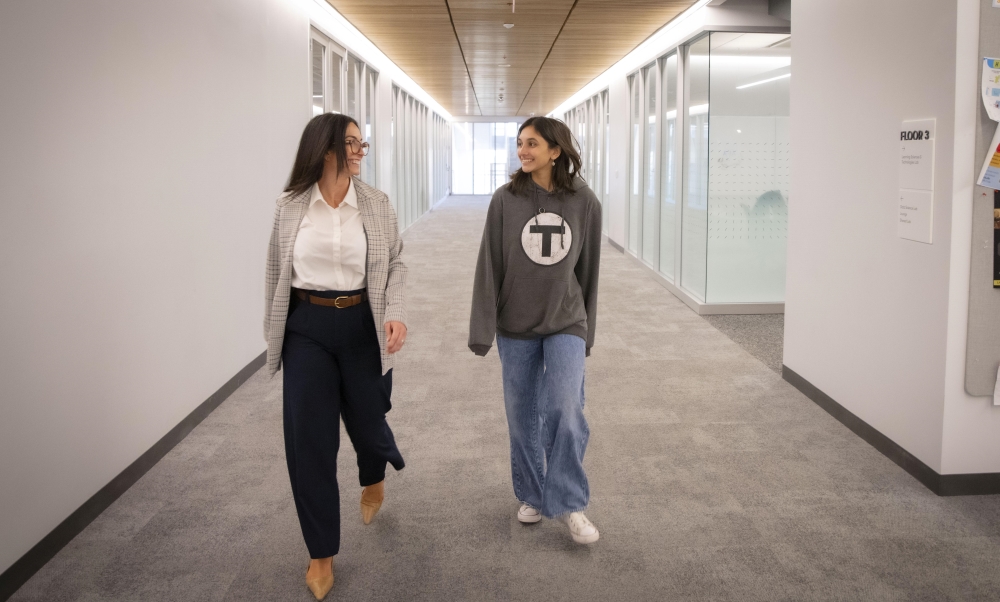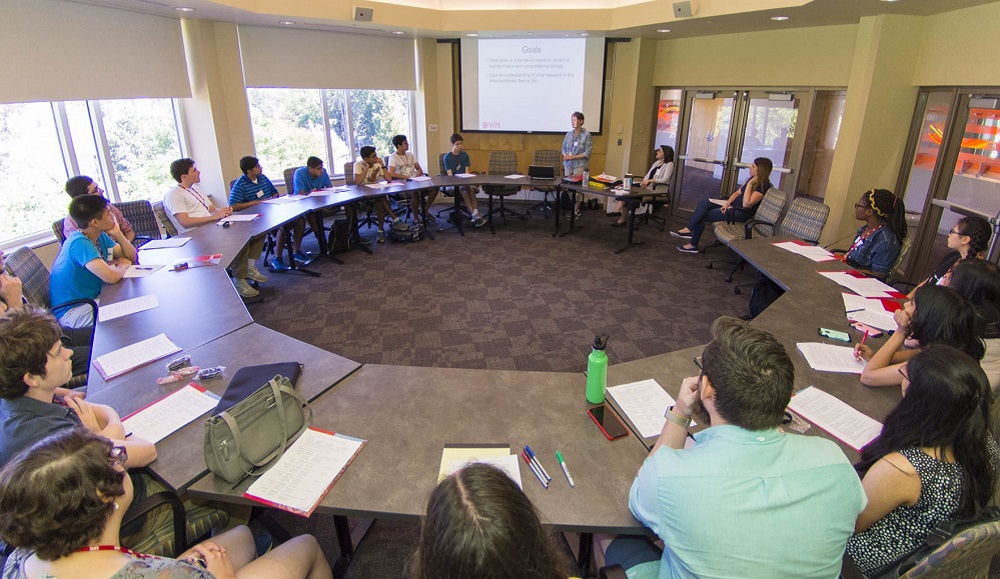When the COVID-19 pandemic forced employers to cancel internships and delay job offers earlier this year, Professor Elizabeth Ryder considered how to reach out to students and alumni in her field of Bioinformatics and Computational Biology to establish an informal alumni mentoring program and help prepare students for the time when job opportunities would open.
She was able to find several alumni who still had WPI email accounts, and others through LinkedIn. Most were enthusiastic to be connected with each other and students in the field, and looked forward to a Zoom gathering.
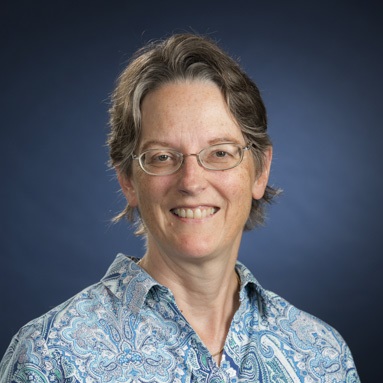
“I was glad to see so many willing to do this, especially for such a young program,” Ryder says. “I was trying to think of a way to reach out to students and alumni. A lot of internships had fallen through, and I thought it would be good to reach out to alumni and establish a friendly alumni network. We plan to make this an annual event,”
Sixteen alumni ended up attending the virtual gathering, with about as many students. One of the alumni suggested a mentoring network. Ryder sent out Google forms to ask them about their jobs and employers, and whether they would be willing to be mentors. She made a table of alumni and their jobs and circulated it before the virtual gathering. Afterward, she sent out information to the students and asked if they were interested in being matched with a mentor. Five said yes.
“Many alumni are fresh to the job market, so they can give the perspective of those just entering the workforce,” Ryder explains. “I was impressed with how well they’ve done in the job market. Our first, Nathan Johnson ’19 (PhD), has a lot of business experience related to networking. He had some great advice about mentoring, and suggested pairing students up with alumni by interest.”
The five students were matched with mentors and met on Zoom, and will continue to communicate as they wish, Ryder says. Johnson points out that while WPI's Career Development Center is a valuable resource for students and alumni, recent graduates can provide the perspective of those currently working in a particular field, as employment opportunities can change rapidly in the COVID—and eventually post-COVID—marketplace.
“The BCB Alumni Mentorship Program allows for current students to be able to ask any questions or discuss any concerns they may have about how to best prepare for their future career decisions,” says Johnson. “I became involved as I want to 'pay it forward,' having had key mentors throughout my career. Without these mentors at key decision points in my career, I would not have been as successful. As this program is early in its adoption, I hope that it continues to gain momentum from both the alumni and the current student engagement.”
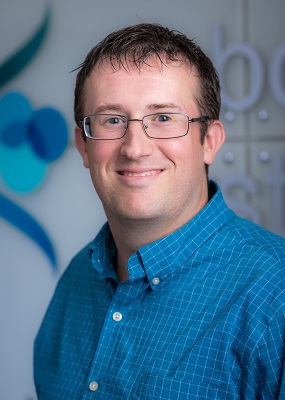
Johnson's mentee, Andrew Ressler, says he values being able to speak at length with an industry professional who can give him a real idea of what type of work is done by bioinformaticians, what career paths are generally taken by them, and how graduate education plays a role.
Ressler’s career plan is to graduate from WPI next spring with degrees in Bioinformatics and Computer Science, as well as minors in business, biology, and German. “After that," he says, "I intend to obtain an MS in Bioinformatics from a university in Germany, Wales, or Ireland. From there I want to work for a small-sized or medium-sized startup and help make it a success. I am interested in all possible applications of bioinformatics as it applies to biotech businesses, from pharmaceuticals to agricultural companies.”
Amanda Holbrook ’23, majoring in Biochemistry and Bioinformatics, says the mentoring has been a great experience, and her mentor was the first person from WPI she has met who has done the same double major combination. “It was very helpful to get insight from someone who had navigated her way through the same classes I'm trying to right now,” Holbrook says. “My mentor gave me lots of great insights from her time in undergraduate studies that PhD programs found most valuable, and what I should do to focus my classes right now around this goal.”
The effort by Ryder in the BCB program is one of several by departments, some of which offer career nights that invite alumni back to campus to meet with students in those programs of study.
The Alumni Relations Office has ramped up volunteer programming and launched a new brand, Crimson Crew, which encompasses all alumni volunteers. Some other examples:
• TechConnect, was an online platform launched two years ago that has the capability to match alumni and students based on several factors.
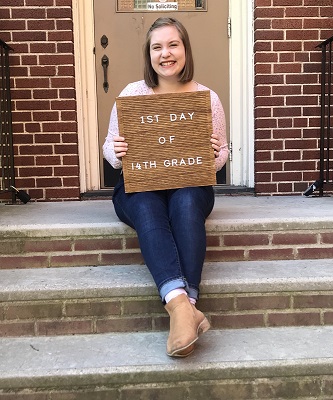
• Life After WPI, a series that invites three alumni to speak to the senior class about postgraduation topics. These are planned for each semester.
• Discussions with the Office of Multicultural Affairs are ongoing on setting up a mentorship program.
• Alumni Relations meets with students who may be looking for alumni in certain industries or companies to help make introductions.
• Student Alumni Society works with alumni in various capacities, such as Crimson Conversations, in which a current student interviews an alumnus and the video is posted on the Alumni and SAS social media pages.
“These are just a few programs happening on campus, which is why we believe we are ranked 12th in the nation for best alumni network by The Princeton Review,” says Brianne Ross, associate director of Alumni Relations and Annual Giving.
As for Ryder, she is pleased with how her initiative has gone and has set up a BCB alumni Slack group and a channel for the alumni mentoring program. She is also seeking more students to participate.
“Alumni can give students a more current picture of their job than faculty can,” she says. “One good thing about doing this virtually is that it’s easy—you can join from California. One reason it’s important to do this is that the program is small. We’ll develop a cohort of people to get to know each other, and keep connected after they leave. We hope the personal attention and support will help our students navigate the real world.”
—Martin Luttrell
